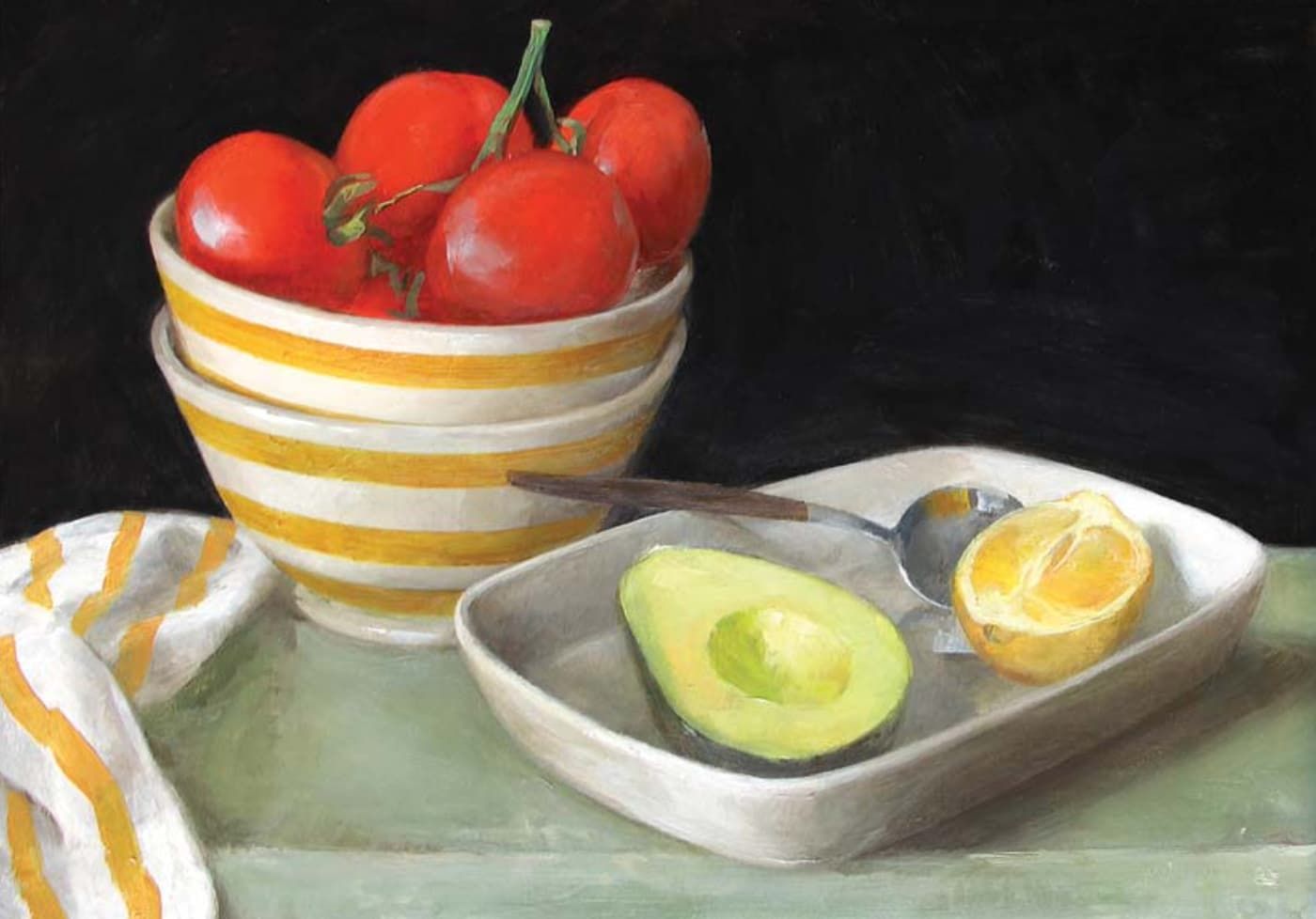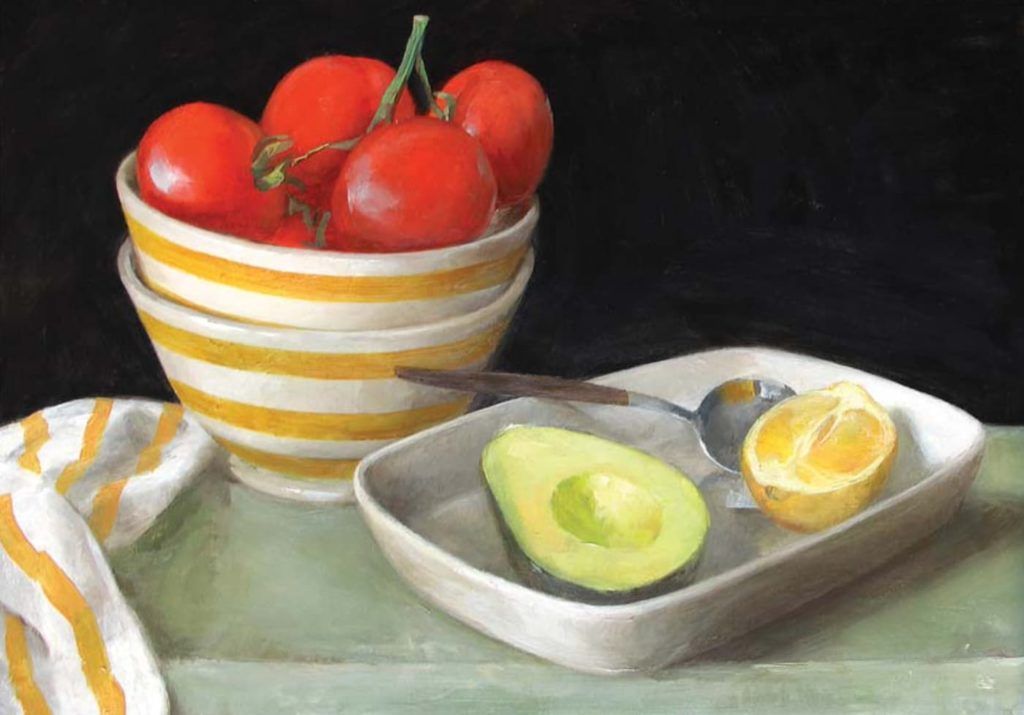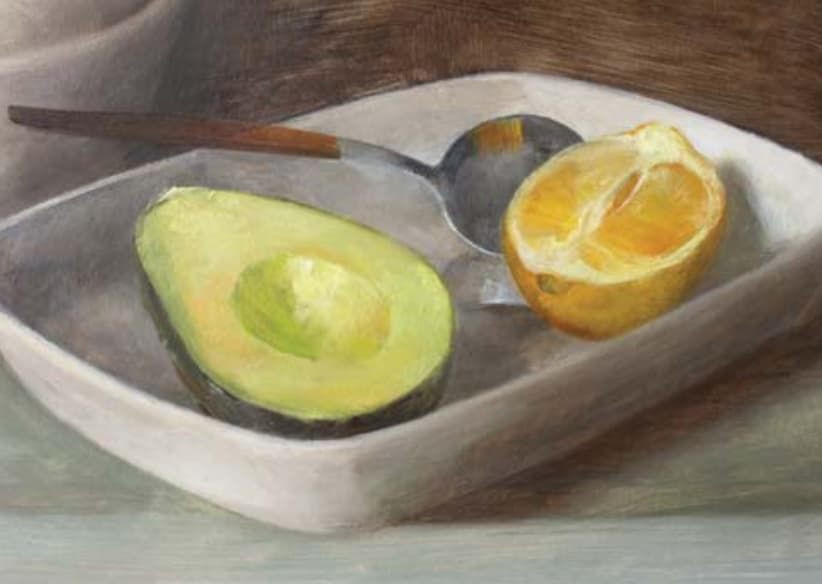Glazing With Oil Paint: Techniques & Demo

Glazing with transparent oil paint creates paintings with luminous hues and layered complexity. Learn how with this step-by-step demonstration.
By Helen Oh

Artists have long experimented with transparent paint layers and glazing with oil paint. One of the earliest uses was layering transparent yellow oil paint over silver gilding to resemble gold. The natural transparency of oil paints varies; some colors are naturally cloudy or turbid, like yellow ochre, while others are more transparent, like Indian yellow. You’ll find most — but not all — transparent colors for successful glazing with oil paint among chromatic hues.
The Stained-Glass Window Effect
The earliest oil painters in Europe used transparent colors as glazes over an opaque underpainting, producing brilliant color effects that rivaled the intense hues of stained glass windows, which likely served as their inspiration. Hugo van der Goes’ Monforte Altarpiece is an excellent example. Artists also used glazes in areas with subtle tones to make nuanced transitions of forms turning from light to shadow.
Carmine red and ultramarine blue were among the most common colors for glazing with oil paint. Since antiquity, carmine had been made from the kermes insect, but in 1518, conquistador Hernando Cortés saw Aztec textiles that were dyed with the cochineal insect, found on prickly pear cacti, and began exporting the insects to Spain.
The new carmine was a sensation in Europe and was widely in paintings and textiles. Ultramarine, which literally translates to “over the sea,” was made from the pulverized precious lapis lazuli stone from Constantinople.
Glazing With Oil Paint: Demo
Glazing is the application of a transparent color over a dry layer of paint, and this produces luminous hues with complex interactions between layers. The transparent colors I use are alizarin crimson, Indian yellow, sap green, Hooker’s green, ultramarine blue, Prussian blue, magenta, stil de grain brown and peach black.

Analagous hues: Glazing with colors next to one another on the color wheel increases chroma.

Complementary hues: Glazing with colors opposite one another on the color wheel produces dark, neutral results.

Neutral hue: Glazing with oil paint using a neutral hue lowers the value of the color.
Step 1

I toned an archival board with a thin layer of gray, using diluted Mars black. After that dried, I drew the composition in vine charcoal.
Step 2

Using raw umber diluted with paint thinner, I blocked in shadows and painted the background.
Step 3

To render the brilliant red tomatoes, I painted those areas in solid cadmium red. I covered the lemon and avocado with opaque local colors: For the lemon, I mixed lemon yellow, cadmium yellow and raw sienna; for the avocado, I used yellow green, Hooker’s green and raw umber. To paint the ceramics and spoon, I combined white, raw umber and ivory black. I loosely brushed peach black into the background. Its cool tonality makes the empty space appear to recede.
Step 4

The tomatoes were rendered with ultramarine blue glazes in the shadows. I used a mixture of white and ivory black to indicate highlights.
Step 5

I used Indian yellow and stil de grain brown to render the moist and transparent quality of the lemon pulp. To paint the peel, I used mixtures of white, Indian yellow, and yellow ochre. I also added a yellow reflection on the spoon. For the avocado, I applied a thin Prussian blue glaze to the pit area and mixtures of white, sap green, and Indian yellow to other areas.
Step 6

I added a dishtowel to the composition to reinforce the linear patterns in the design. With this addition, I had fun describing the yellows on different textures. I painted the dishtowel with white and ivory black, and the green stem and the table with white, yellow ochre, Hooker’s green, and ivory black.
Step 7: Final

I added the stripes to the towel with a mixture of Indian yellow, cadmium yellow, and stil de grain brown. Finally, to complete this demonstration of glazing with oil paint, I painted additional highlights with mixtures of white and ivory black for Summer Still Life.
HELEN OH is an artist and conservator. Helen Helen has taught studio art courses at the School of the Art Institute of Chicago and the Linos School of Art in Umbria, Italy. She also teaches oil painting technique workshops at the New York Academy of Art. Follow her at @helen_oh_artist.
A version of this article originally appeared in Artists Magazine.

Have a technical question?
Contact UsJoin the Conversation!